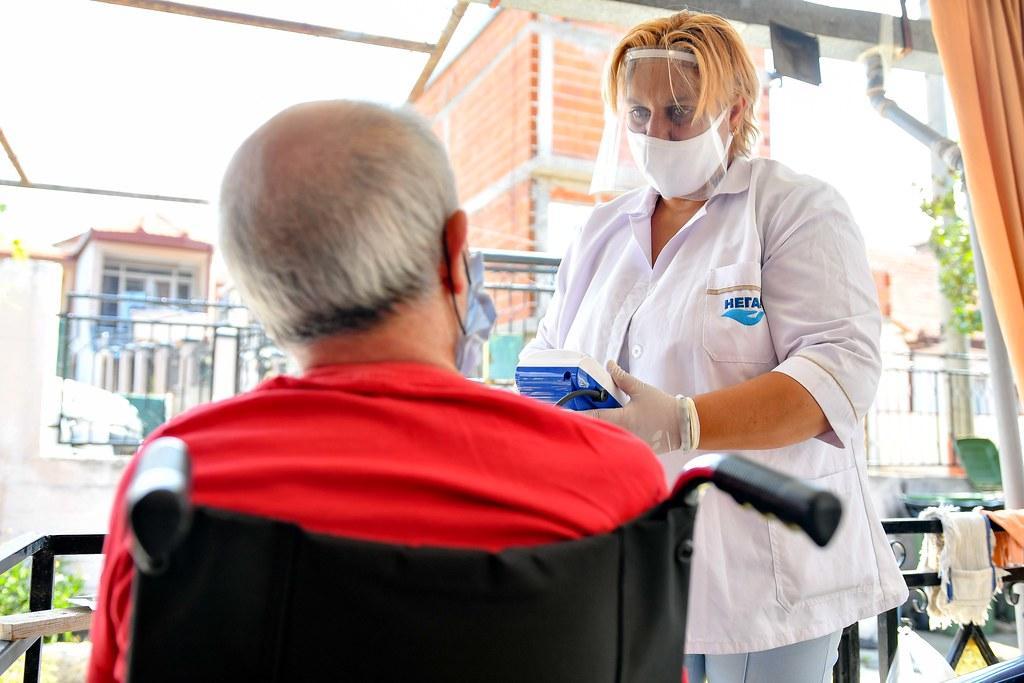Caregivers face different challenges in their daily lives. And the most common of those challenges is having to devote a huge chunk of their day to caring for their loved ones. Thus, it’s easy to understand why caregivers would feel overwhelmed and seek out benefits.
Although the two Social Security programs—Social Security Disability Insurance (SSDI) and Supplemental Security Income (SSI)—don’t offer caregiver benefits, there are various other programs that do.
We’ll talk about the different caregiver benefits available in this article.
Who is a Caregiver?
A caregiver is someone who provides assistance to someone who is unable to care for themselves due to an impairment such as illness, injury, or disability. Caregiving members of the family are those who look after a family member out of their own free will.
Family members such as children, spouses, and extended family members often fill these roles.
The specifics of providing care to a patient with a disability will vary based on the nature of that disability and the patient’s individual needs. However, regardless of the needs, caregivers generally have to provide the following types of care:
Basic Cleaning Duties
Your job as a caregiver requires you to have at least basic housekeeping abilities. The patient may need your assistance with everyday chores like dishwashing, laundry, ironing, and vacuuming.
Errands and Shopping
You may need to drive a loved one around to run errands like grocery shopping and doctor’s visits if they are unable to drive or use public transportation.
Maintaining Personal Hygiene
Some people may require help with personal hygiene tasks, including bathing, grooming, and using the restroom, because of a disability. As a caregiver, you need to strike a balance between helping your loved one and letting them maintain their autonomy for as long as feasible.
Timely Medication Reminders
Medication management includes not just providing pills to the patient but also checking prescriptions and picking up refills. Aside from that, you should keep track of the medication’s stock and any adverse reactions routinely.
Preparing Food
Caregiving duties can include cooking, purchasing, and menu planning for the person you are caring for. It’s crucial that the food be not only healthy but also enjoyable and easy to digest. There may be dietary preferences, limits, and allergies to think about as well.
Incontinence Management
One of the most difficult aspects of being a caregiver is providing care for someone with incontinence. This can lead to feelings of frustration, resentment, and shame for the care patient and the caregiver. Helping the patient establish a regular bathroom schedule and using incontinence products regularly can reduce their stress and anxiety.
Monitoring Vitals
If a member of your family has a long-term health problem that requires close observation, you will be expected to take regular readings of their vital signs and keep a record of them. These readings may include the person’s blood pressure, temperature, pulse, and the rate at which they breathe.
Social Security Disability Insurance for Caregivers

To be eligible for Social Security Disability Insurance benefits, you must first have paid Social Security taxes on income earned from jobs or via self-employment for a specific amount of time.
Additionally, you must have a medically determinable physical or mental disability that lasted for a minimum of one year, is expected to remain for a minimum of one year, or results in death.
The Social Security Administration has provided a list of many medical problems, all of which match the requirements for disabilities that meet the SSDI definition, which is used to decide whether or not a person is eligible to receive disability benefits. These conditions are as follows:
- Amyotrophic lateral sclerosis, also commonly referred to as Lou Gehrig’s disease
- Some heart diseases
- Different forms of cancer
- Depression and anxiety
Some of the medical disorders on the Social Security Administration’s Listing of Impairments are so severe that they require 24-hour care from a caregiver. Surprisingly, however, the SSDI fails to provide any direct payments for or to caregivers.
The beneficiary is, of course, at liberty to compensate a member of their own family or any other individual for the services that they provide in the role of caregiver. Additionally, if you are eligible for Social Security Disability Insurance, your spouse may be eligible to receive monthly benefits that are equivalent to half of the SSDI benefits that are payable to you.
The Social Security Disability Insurance benefit payments that your spouse receives will not have any impact on the benefits to which you are entitled, but the maximum amount that can be paid out in SSDI and family benefits combined cannot be more than 150–180 percent of the disability payment.
Your spouse needs to be at least 62 years old or older in order to be eligible for family benefits. If they are taking care of a child under the age of 16 or a disabled child under the age of 22, they do not need to meet the minimum age requirement.
It’s possible to consider the benefits that your spouse receives on a monthly basis as indirect reimbursement for the caregiving services they’ve provided to you.
Supplemental Security Income for Caregivers
The SSI program offers disability benefits to individuals and children who are blind or disabled and meet the qualifying criteria, which include limited assets and income that they receive from sources other than SSI. Both Social Security Disability Insurance and Supplemental Security Income do not provide any benefits to caregivers.
Caregiver costs might not be covered by SSI, but Medicaid might be an alternative. Anyone who meets the requirements for Supplemental Security Income may also be eligible for Medicaid.
Medicaid Self-Directed Care for Caregivers

Medicaid covers medical expenses for those with low incomes, including those receiving Supplemental Security Income due to a disability. The federal government and each state jointly fund the program, but the states themselves are in charge of managing it.
The Medicaid program was initially established in 1965 under the authority granted by Title XIX of the Social Security Act.
The federal government establishes broad policies, but it is up to the individual states to implement and manage their Medicaid systems. As a result, there is considerable variation among the states in terms of service coverage and qualifying requirements.
When you apply for Supplemental Security Income, some states will automatically enroll you in Medicaid if you qualify, while other states will require you to apply for Medicaid separately.
The Medicaid Self-Directed Care program gives people with disabilities more control over their own healthcare by empowering them to set their own priorities and budgets for the treatments they need.
If you or a loved one have a disability and require a caregiver, you can receive financial support through this program to hire anybody you choose.
Medicaid Self-Directed Care is a federal program, but each state can give it a different name and establish its own rules due to the split between the federal and state governments. For instance, the program is known as the Community Alternative Program for Disabled Adults in the state of North Carolina. In order to participate in the program, an adult with a disability must fulfill all of the following requirements:
- You need to be over the age of 18.
- You need assistance and are at risk of being placed against your will in a nursing home.
- You have the resources necessary to live independently in the community with the help of family and the program.
The program in North Carolina allows disabled individuals to use home aids to receive assistance with activities such as bathing, clothing, walking, meal preparation, basic housekeeping, and errands. A qualified disability attorney can guide you as to whether you are qualified for Medicaid or other equivalent programs in your state.
Veteran-Directed Care Program
Prior to 2018, this initiative was referred to as the Veteran-Directed Home and Community-Based Services program. The major objective is to give veterans who are at risk of being placed in a nursing home the choice of receiving the care they need at home.
A veteran is provided with a spending limit that they are responsible for managing and using to pay for long-term services. This is done with the support of a program counselor who offers veterans, their families, and caregivers support in the following areas:
- Evaluation and care planning
- Handling money matters
- Ongoing help and counseling when it’s needed
Eligible participants include all veterans enrolled in the VA health care system, but they must undergo an eligibility assessment to see if they may benefit from the program’s services.
A veteran is considered to be in need of assistance if they require help with activities such as showering, dressing, or preparing meals. Local VA medical centers are participating providers in the Veteran-Directed Care program.
Program of Comprehensive Assistance for Family Caregivers (PCAFC)
Veterans who have received a U.S. Department of Veterans Affairs (VA) disability rating of at least 70% are eligible for the PCAFC program. This program is only available to veterans who served on or after September 11, 2001, and those whose disabilities were aggravated or caused while they were serving in active duty on or before May 7, 1975.
Additionaly, the Veteran must need personal care services for a minimum of six months. If the requirements are met, the program gives them the option of selecting a member of their immediate family to act in the capacity of a caretaker. There is also the also the option of designating up to two other members of their family as secondary caretakers.
Primary caregivers are eligible for a variety of benefits, including:
- Monthly benefits provided to them by the program
- Access to health insurance via the VA’s Civilian Health and Medical Program
- Counseling for emotional distress
- Extra compensation for taking the veteran to medical visits
A minimum of thirty days of respite care per year provides a caregiver with the opportunity to take some time off while another caregiver takes up their responsibilities.
Secondary caregivers within a family have practically all of the same benefits as primary caregivers, with the exception of regular cash payments and medical coverage.
Private Insurance Policies
Caregiving family members may be eligible for compensation from a long-term care insurance policy if their disabled loved one has one. It all comes down to the policy’s specific benefits.
There are certain insurance policies that will pay for caregivers, but such policies don’t cover the costs for caregivers who are family members of the disabled person and live in the same household.
If you have a long-term care policy, you may want to consult an attorney specializing in such benefits to find out if the policy will cover a family member’s caregiving expenses.
Family Medical Leave Act and State Laws

The federal Family Medical Leave Act (FMLA) provides for 12 weeks of unpaid leave per year for family members to take care of their loved ones with health conditions. A few states have implemented their own legislation that offers larger benefits, but the federal law does not provide compensation to a caregiver and only applies to companies with 50 or more employees.
For instance, as of right now, eleven states have paid family and medical leave, but it’s exclusively offered to people who work for larger companies, which would make the legislation comparable to the federal statute.
Applying for Social Security Benefits as a Caregiver
If a family member or friend is unable to apply for Social Security disability benefits on their own, you can do so on their behalf by filling out an application as a caregiver. Applying for Social Security Disability Insurance online on the Social Security Administration’s (SSA) website is the quickest and most convenient method.
Applying for disability benefits on behalf of a loved one requires careful organization of relevant documents and medical records. You’ll want to get as much evidence of the disability as you can, and following the disability checklist in the Adult Disability Starter Kit can point you in the right direction. Previous employer information, tax returns, and current financial statements are all required paperwork.
Conclusion
A caregiver typically has many responsibilities on his or her shoulders, which is why there are some programs that offer them benefits to relieve some of their workload. If you would like more information on what caregiver benefits you qualify for, get in touch with the SSA or you may consult with a disability attorney.


